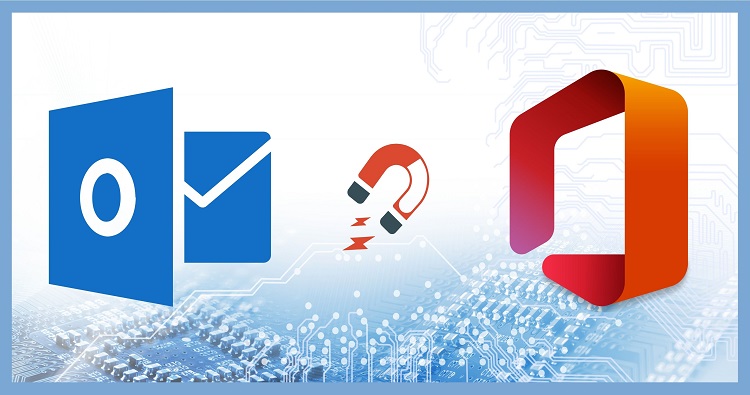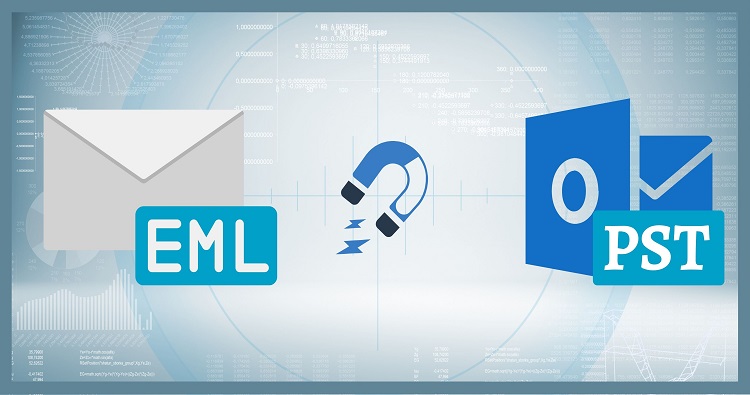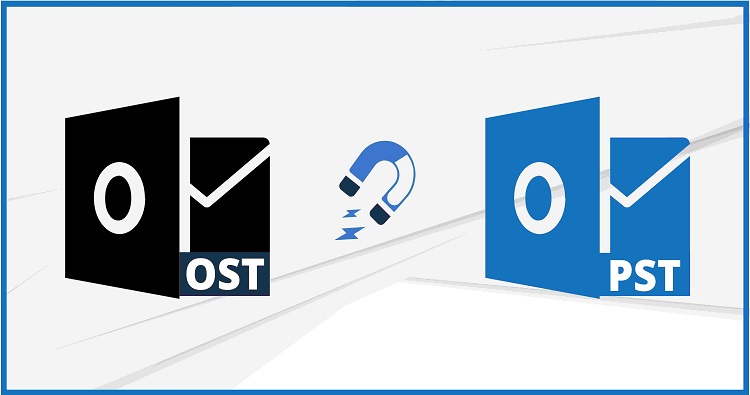In the ever-connected world, occasional internet disruptions are inevitable. But what happens to your access to emails, calendars, and contacts when the Wi-Fi goes down? This is where Offline Storage Tables (OST) files come into play in Microsoft Outlook.
Are you an existing user or new to MS Outlook and confused about what is OST file Why did Outlook create it? you are in the right place; here in this article, I include almost complete information about the Outlook Offline storage table including its definition, benefits, limitations, OST file location, and its alternative. so let’s start with understanding the OST data file.
What is an OST file?
An OST file is a locally stored copy of your mailbox data from certain email accounts, such as Exchange, IMAP, and Outlook.com. This file allows you to work offline, meaning you can access previously downloaded emails, calendar events, contacts, and tasks even without an internet connection.
Benefits of using OST files:
OST files empower you to work seamlessly in Microsoft Outlook even when offline. They act as a local copy of your mailbox, allowing you to access emails, contacts, and calendars without an internet connection. Once reconnected, changes are automatically synchronized, ensuring your data remains up-to-date. This flexibility is ideal for travellers, those on unreliable internet, or anyone needing access on the go.
Uninterrupted Workflow: Power of Offline Access
Imagine this: you’re in the middle of composing an important email, or meticulously planning your schedule for the week ahead, when suddenly the internet connection drops. With OST files in Microsoft Outlook, such disruptions don’t have to derail your workflow. These ingenious files act as a safety net, enabling you to seamlessly continue working offline.
Even without an internet connection, you can:
- Compose and edit emails: Craft new emails, reply to existing ones, and make edits with the confidence that they’ll be sent automatically once you reconnect.
- Manage your calendar: Schedule appointments, edit existing entries, and keep track of your commitments, ensuring you stay organized even during temporary internet outages.
- Maintain your contact list: Add new contacts, edit existing information, and access essential details of your professional and personal network, all while remaining offline.
This uninterrupted access to emails, calendars, and contacts empowers you to maintain productivity and efficiency, even in the face of unforeseen internet disruptions. So, the next time you encounter a Wi-Fi hiccup, don’t fret – with OST files by your side, you can keep moving forward seamlessly.
Improved Performance with OST Files: A Deeper Dive
One of the most significant advantages of OST files lies in their ability to enhance the overall performance of Microsoft Outlook. By storing a local copy of frequently accessed data, such as emails, calendars, and contacts, OST files significantly reduce the need for constant communication with the server.
This translates to faster loading times for already downloaded items, as Outlook doesn’t have to retrieve them from the server each time you access them. Additionally, OST files can help improve responsiveness, especially when dealing with large mailboxes or slow internet connections.
Instead of waiting for the server to download everything, Outlook can utilize the readily available local data, providing a smoother and more responsive user experience. This can be particularly beneficial for users who frequently switch between folders, search for specific emails, or work with attachments. Overall, OST files play a crucial role in optimizing Outlook’s performance, especially when internet connectivity is unreliable or limited.
Limitations of OST files:
The main limitation of OST files is their maximum size of 50GB for Outlook 2010 and later versions. Earlier versions have a lower limit of 20GB. While this seems like a large amount, heavy email users with extensive attachments can reach it surprisingly quickly. Exceeding the limit can cause issues like:
- Reduced performance: A large OST file can slow down Outlook and make it sluggish.
- Functionality limitations: Sending emails, copying or moving items within the file, and auto-archiving can become disabled when the size limit is reached.
Don’t Consider OST file as a Backup:
While OST files offer the convenience of offline access, it’s crucial to understand they are not true backups of your mailbox data. They function as synchronized copies, meaning they reflect a snapshot of your mailbox at the time of download.
Any changes you make offline, such as composing new emails, editing saved drafts, or deleting messages, are only stored locally within the OST file. These changes don’t automatically update on the server and only become permanent once you reconnect to the internet and synchronize your OST file.
Limited Portability
OST files are specific to the user account and mailbox they are associated with. Unlike PST files (used for local data storage), they cannot be easily exported or transferred to another computer or user profile.
Server Dependence: A Necessary But Transient Disconnection
While OST files offer the convenience of offline access, it’s crucial to understand their inherent dependence on the server for complete data reflection. Changes you make offline, such as composing a new email, editing a calendar event, or adding a contact, are temporarily stored within your local OST file.
These modifications exist solely on your device and are not automatically reflected on the server that hosts your main mailbox data. This temporary disconnect serves a purpose. It ensures that any changes made by yourself or others using different devices don’t conflict upon synchronization.
Once you reconnect to the internet, Outlook initiates a synchronization process. During this process, the modified data in your OST file is uploaded to the server, updating your mailbox and ensuring everyone accessing your account from various devices has the latest information.
This two-step process, while crucial for maintaining data consistency, can lead to a brief delay in reflecting changes made offline until a successful synchronization occurs.
Managing OST files:
Managing OST file size is very crucial when working with Outlook, This is because when an OST file reaches its size limits most of the time it corrupts or becomes inaccessible for users. If you are an Outlook user then you must know about what is OST file and how to manage it efficiently. First, you have to know the location of the OST file in your computer system.
Locating Your OST File: A Guided Search
While the exact location of your OST file might differ slightly depending on your Outlook version, finding it usually involves navigating to your user profile directory. Here’s a breakdown for different scenarios:
For Outlook 2013, 2016, 2019, and 2021:
- Open Microsoft Outlook.
- Click on the File tab, then navigate to Info.
- Select Account Settings and then click on Account Settings again.
- Switch to the Data Files tab.
- Choose the OST file associated with your desired email account from the list.
- Click the Open File Location button. This will directly open the folder containing your OST file in Windows File Explorer.
For older versions of Outlook (2010 and earlier):
- Press the Windows key + R to open the Run dialog box.
- Type control.exe mail and press Enter.
- In the Mail window, switch to the Advanced tab.
- Click on Outlook Data File Settings.
- Select the desired OST file and click Open File Location.
Remember, this folder might be hidden by default. To view it, enable the option to “Show hidden files and folders” in your File Explorer settings.
Creating a new OST file: (Rebuild Outlook Profile)
Creating a new OST file from scratch is your best bet if your existing file becomes corrupted or unusable. Here’s how to do it step-by-step:
- Ensure Outlook is completely closed and not running in the background.
- In Outlook, go to “File” >> “Account Settings” >> “Account Settings“.
- Select the email account associated with the corrupted OST file and click “Remove”.
- Click “Add Account” and complete the setup wizard to re-add your email account. This will automatically generate a fresh, new OST file.
- Once your account is set up again, Outlook will start downloading your mailbox data to populate the new OST file. This could take a while depending on the size of your mailbox.
Alternatives to OST files (Offline Storage Table)
While OST files excel at facilitating offline access, Personal Storage Table (PST) files offer a distinct set of functionalities within the Outlook ecosystem. Unlike OST files that are tethered to specific email accounts, PST files act as versatile storage containers for your Outlook data, independent of the server.
This makes them ideal for local storage and backups, particularly with POP3 email accounts. POP3 accounts download all emails to your computer, and PST files provide a convenient way to archive older emails, contacts, and calendar entries to free up space in your inbox or simply preserve them for future reference.
Additionally, PST files can be used to import and export data between different email accounts or Outlook installations, offering greater control over your email organization and migration needs.
Conclusion:
Now we better know what is OST file in Outlook and how it works to provide offline access to users. You can say that the OST file is the backbone of MS Outlook. Even OST is the backbone of Outlook but still, you can’t directly import OST files in Outlook. You have to Export it into PST format. When I tried the new Outlook, I didn’t see any Import/Export wizard for exporting PST. I hope it is in only beta versions of the new Outlook.
FAQ (What is OST file?)
Question: How do I open an OST file?
Opening an OST file directly is not possible; you must use an OST Viewer Tool or Outlook with the associated account.
Question: Can I edit an OST file?
Editing an OST file directly is not supported; changes must be done within Outlook and then synchronized with the Exchange server.
Question: What happens to my OST file if I change computers?
If you change computers, the OST file should be recreated on the new machine by Outlook when you configure your Exchange account – copying the file without proper reintegration isn’t practical.
Question: Do I need an OST file if I have an IMAP account?
An OST file is not required for an IMAP account as it uses a PST file to store its data locally.
Question: What is the difference between an OST file and a PST file?
An OST file is an offline copy of your Exchange mailbox, while a PST file is a personal storage table that stores your emails and other Outlook items locally and is used primarily with POP3 and IMAP accounts. read this difference between OST and PST files.
Question: How do I recover data from a corrupted OST file?
To recover data from a corrupt OST file, you can use recovery software or convert the OST to a PST file to attempt data retrieval.
Question: Can I delete my OST file?
You can delete your OST file, but it will remove the locally stored data; Outlook will create a new OST file and re-download the data from the server if the account is still active.
Question: How do I create a new OST file?
To create a new OST file, first, close Outlook, rename the existing OST file, and then reopen Outlook; a new OST file will be automatically created.




